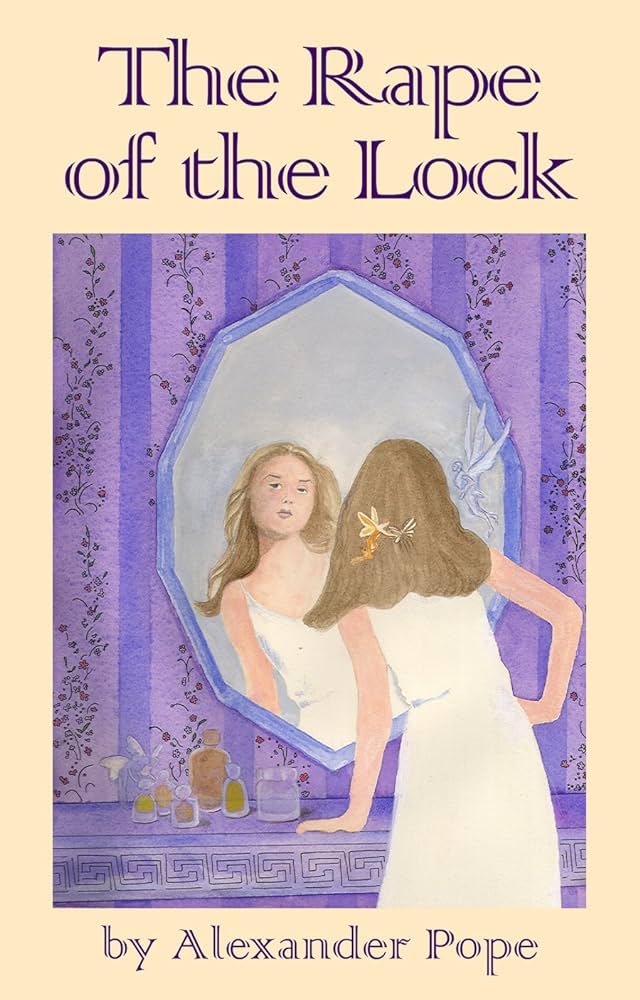“The Rape of the Lock” is a mock-heroic poem written by Alexander Pope and first published in 1712. Set in the high society of early 18th-century England, the poem satirizes the frivolous and trivial pursuits of the aristocracy while also commenting on broader themes of vanity, social status, and gender roles.
During the early 18th century, England was experiencing a period of political stability and cultural flourishing known as the Augustan Age. The era was marked by a growing interest in literature, art, and philosophy, as well as the rise of a wealthy and influential aristocratic class known for its extravagant lifestyles and social gatherings.
Against this backdrop, Pope’s “The Rape of the Lock” emerged as a biting critique of the excesses and pretensions of the upper class. The poem reflects the tensions and contradictions of its time, offering a satirical commentary on the follies and foibles of the aristocracy while also showcasing Pope’s wit, humor, and mastery of poetic form.
Key Facts:
- Inspiration: “The Rape of the Lock” was inspired by a real-life incident involving the cutting of a lock of hair belonging to Arabella Fermor, a young woman from a prominent English family. The incident sparked a feud between the families involved and provided Pope with the material for his satirical masterpiece.
- Mock-Heroic Style: The poem employs a mock-heroic style, using epic conventions and language to elevate a seemingly trivial event—the cutting of a lock of hair—into a grand and exaggerated narrative. Through this stylistic device, Pope satirizes the pomposity and self-importance of the aristocracy while also highlighting the absurdity of their concerns.
- Themes: “The Rape of the Lock” explores themes of vanity, social hierarchy, and gender relations. The poem satirizes the frivolous pursuits of the upper class, including their obsession with fashion, beauty, and social status. At the same time, it raises questions about the nature of femininity and masculinity, as well as the power dynamics between men and women in society.
- Reception: “The Rape of the Lock” was initially published as a two-canto poem in 1712, with additional cantos added in later editions. The poem was well-received by audiences and critics alike, cementing Pope’s reputation as one of the leading literary figures of his time. However, it also sparked controversy among some readers who viewed its subject matter as trivial or inappropriate.
Major Characters:
- Belinda: The protagonist of the poem, Belinda is a young aristocratic woman whose beauty and social standing make her the envy of her peers. The cutting of her lock of hair sets off the chain of events that forms the central narrative of the poem.
- The Baron: The Baron is a young nobleman who becomes infatuated with Belinda and is determined to possess a lock of her hair as a token of his affection. His actions set off a series of comic misunderstandings and confrontations between the two characters.
- Thalestris: Thalestris is Belinda’s friend and confidante, who provides support and guidance throughout the poem. She represents the voice of reason and wisdom amidst the chaos and frivolity of the aristocratic world.
Minor Character:
- Clarissa: Clarissa is another of Belinda’s friends who accompanies her to Hampton Court for a game of ombre. While she plays a relatively minor role in the poem, her presence adds depth to the social dynamics and relationships among the characters.
As readers explore “The Rape of the Lock,” they are invited to reflect on the timeless themes of vanity, social hierarchy, and gender relations that Pope satirizes with wit and insight. Through its blend of humor, satire, and poetic skill, the poem offers a captivating glimpse into the world of 18th-century England and the foibles of its aristocratic elite.







